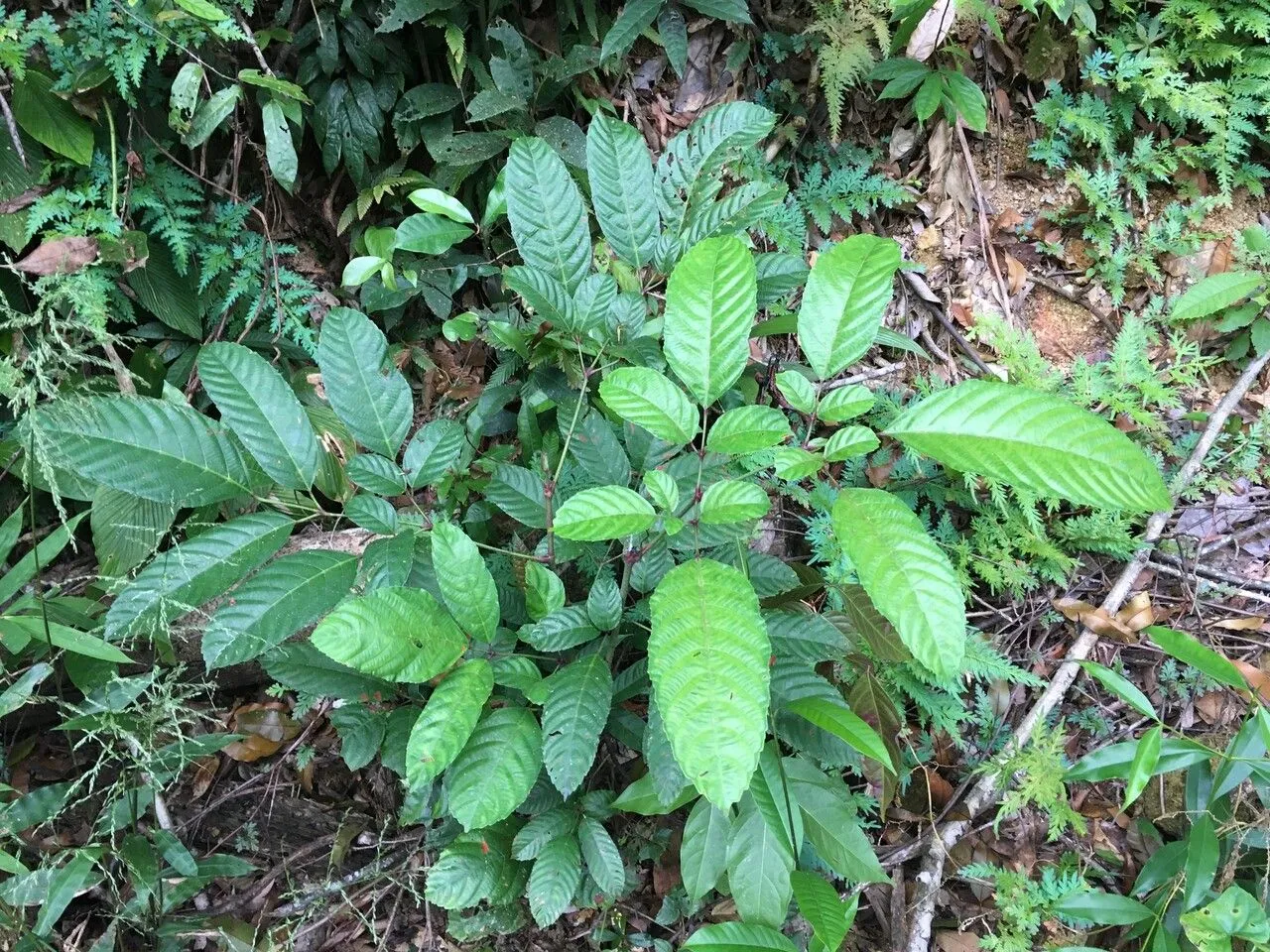
Author: (Burm.f.) Merr.
Bibliography: Philipp. J. Sci. 14: 245 (1919)
Year: 1919
Status: accepted
Rank: species
Genus: Leea
Vegetable: False
Observations: Trop. & Subtrop. Asia to W. Pacific
Bandicoot-berry, scientifically known as Leea indica, is a noteworthy plant commonly found across tropical and subtropical regions of Asia, extending to the Western Pacific. This plant belongs to the Vitaceae family, which is known for its diversity and numerous species spread across different climates.
Originating from its native range, Bandicoot-berry has adapted well to a variety of environments, making it a resilient and versatile species. In its natural habitat, it often thrives in the understorey of forests, benefiting from the shelter and humidity these environments provide. The plant’s survival in such diverse climatic conditions reflects its ecological adaptability.
Leea indica features lush green foliage that can add an ornamental value to gardens and natural landscapes. The leaves are typically broad, providing an ample surface area for photosynthesis, which supports its rapid growth. During its flowering season, Bandicoot-berry produces small, yet visually appealing flowers. These flowers often attract pollinators, contributing to the plant’s reproductive success and biodiversity in the regions where it grows.
One of the significant aspects of Bandicoot-berry is its role in traditional medicine. Various parts of the plant have been used for their medicinal properties for centuries. In many cultures, the roots, leaves, and stems are harvested for use in treating a range of ailments, reflecting the plant’s importance in herbal medicine traditions.
Leea indica’s ecological contributions are also remarkable. It provides shelter and food for various species of insects and animals, thus playing a crucial role in maintaining the ecological balance in its native regions. By supporting diverse wildlife, it ensures the sustainability of the ecosystems it inhabits.
The plant’s adaptability and diverse applications make it a subject of interest not only to botanists and horticulturists but also to those interested in traditional medicine and ecological conservation. Despite its widespread occurrence, efforts to study and conserve this plant remain vital to ensure that it continues to thrive amid changing climatic conditions and habitat loss.
Bandicoot-berry’s resilience and multi-faceted uses underscore its significance. As we continue to explore and understand more about this extraordinary plant, it exemplifies the intricate connections within natural ecosystems and the enduring legacy of traditional knowledge.
Msa: memali
Swe: asiatisk leea
Eng: bandicoot-berry
Khm: បាយក្ដាំង
En: Bandicoot-berry, Bandicoot Berry
Ar: ليا هندية
As: আহিনা
Zh: 火筒树
Fi: Punaleea
Fr: Leea de Guinée
Km: បាយក្ដាំង
Ms: Memali
Ml: ഞഴുക്
Si: ගුරුල්ල
Sv: Asiatisk leea
Zh-tw: 印度火筒樹
Ta: பொலவக்கொடி
Th: กะตังใบ
Taken Jan 1, 2000 by Daniel Barthelemy (cc-by-nc)
Taken Feb 20, 2019 by Daniel Barthelemy (cc-by-sa)
Taken Feb 20, 2019 by Daniel Barthelemy (cc-by-sa)
Taken Feb 20, 2019 by Daniel Barthelemy (cc-by-sa)
Taken Feb 20, 2019 by Daniel Barthelemy (cc-by-sa)
© copyright of the Board of Trustees of the Royal Botanic Gardens, Kew.
© copyright of the Board of Trustees of the Royal Botanic Gardens, Kew.
© copyright of the Board of Trustees of the Royal Botanic Gardens, Kew.
Taken Jan 7, 2019 by Daniel Barthelemy (cc-by-nc)
Taken Dec 21, 2018 by Daniel Barthelemy (cc-by-nc)
Taken Dec 21, 2018 by Daniel Barthelemy (cc-by-nc)
Taken Oct 11, 2012 by John Tasirin (cc-by-sa)
Taken Oct 10, 2012 by John Tasirin (cc-by-sa)
Taken Jan 1, 2000 by Daniel Barthelemy (cc-by-nc)
Taken Jan 1, 2000 by Daniel Barthelemy (cc-by-nc)
Taken Dec 21, 2018 by Daniel Barthelemy (cc-by-nc)
Taken Oct 11, 2012 by John Tasirin (cc-by-sa)
Taken Oct 11, 2012 by John Tasirin (cc-by-sa)
Growth habit>: Shrub, Tree
Family: Myrtaceae Author: (F.Muell.) K.D.Hill & L.A.S.Johnson Bibliography: Telopea 6: 402 (1995) Year: 1995 Status:…
Family: Rubiaceae Author: Pierre ex A.Froehner Bibliography: Notizbl. Bot. Gart. Berlin-Dahlem 1: 237 (1897) Year:…
Family: Sapindaceae Author: Koidz. Bibliography: J. Coll. Sci. Imp. Univ. Tokyo 32(1): 38 (1911) Year:…
Family: Asteraceae Author: A.Gray Bibliography: Pacif. Railr. Rep.: 107 (1857) Year: 1857 Status: accepted Rank:…
Family: Fabaceae Author: Medik. Bibliography: Vorles. Churpfälz. Phys.-Ökon. Ges. 2: 398 (1787) Year: 1787 Status:…
Family: Aspleniaceae Author: (Cav.) Alston Bibliography: Bull. Misc. Inform. Kew 1932: 309 (1932) Year: 1932…